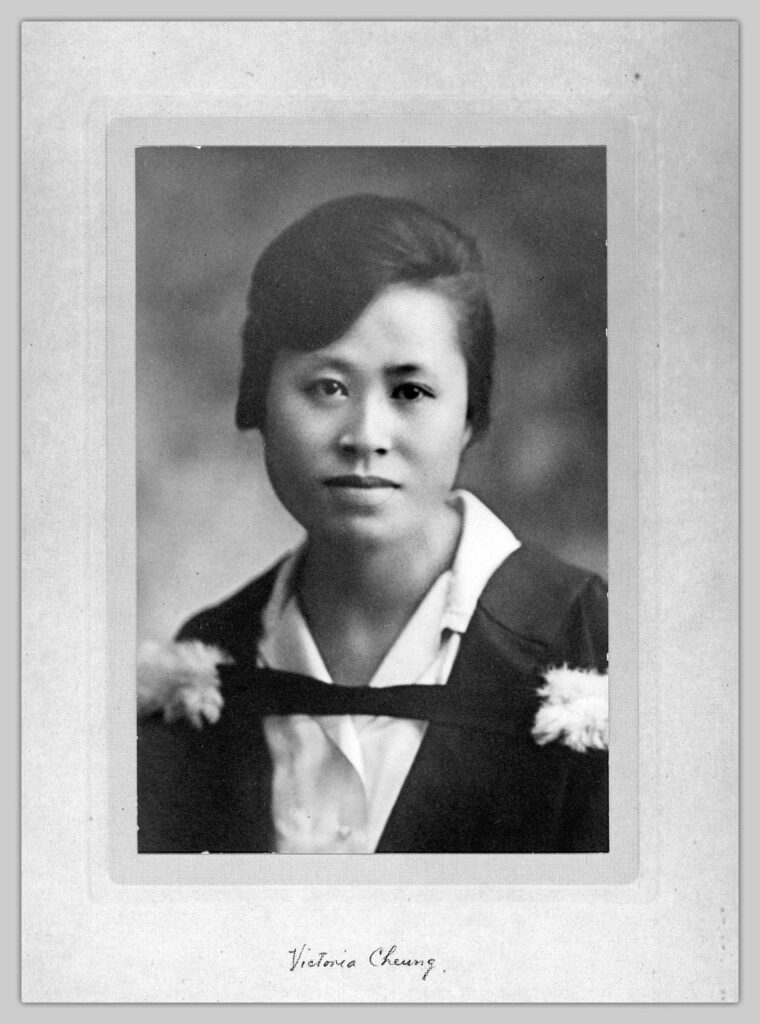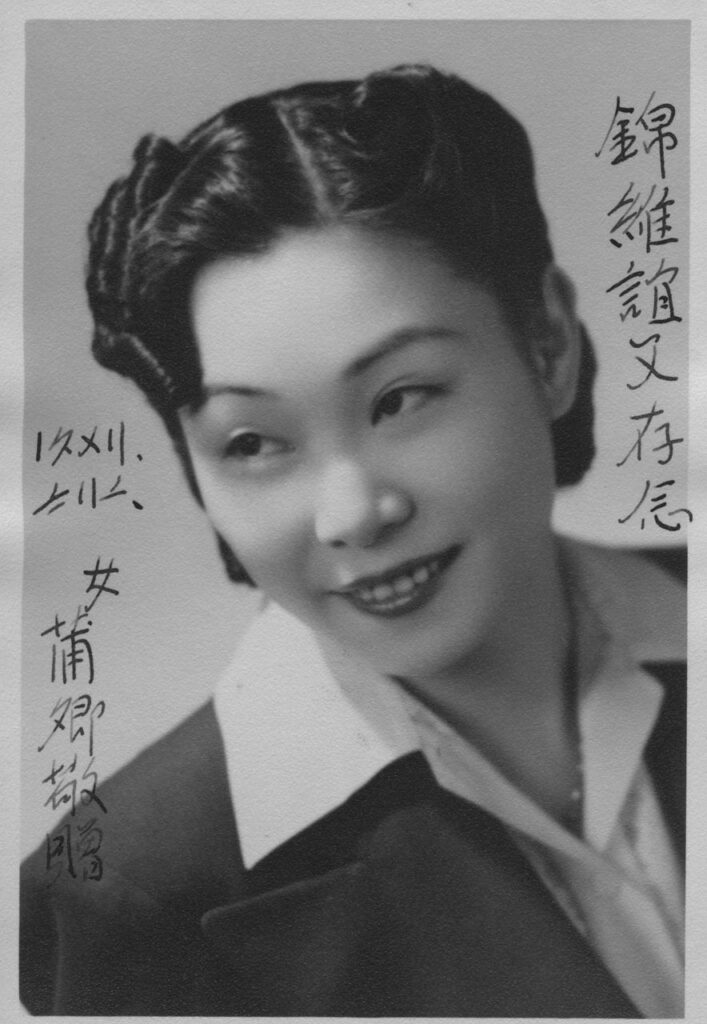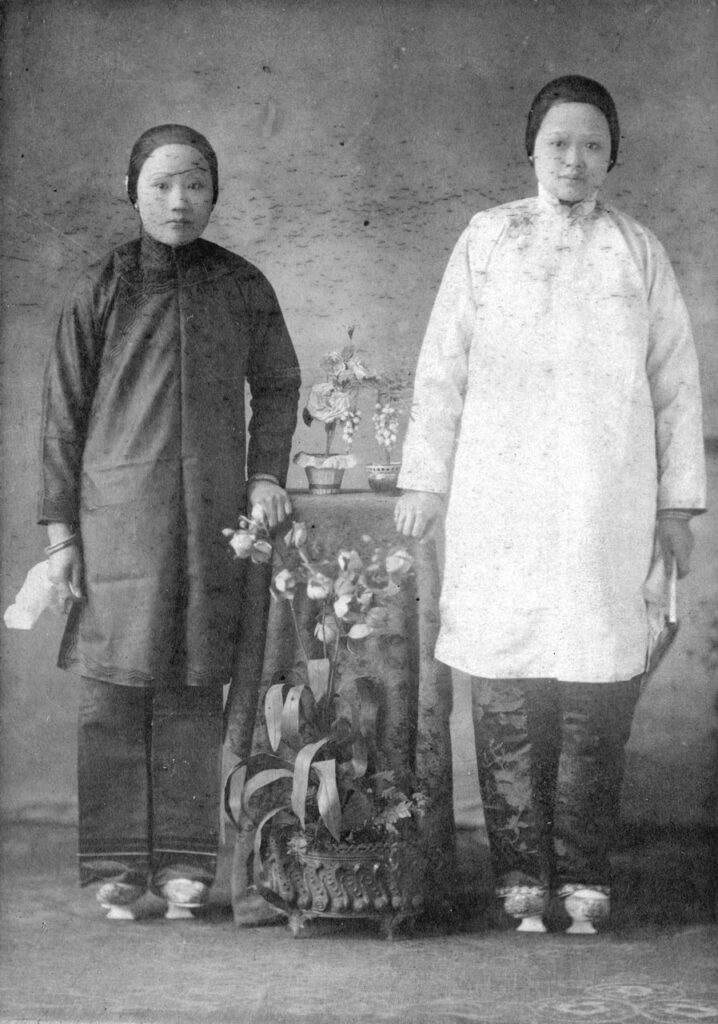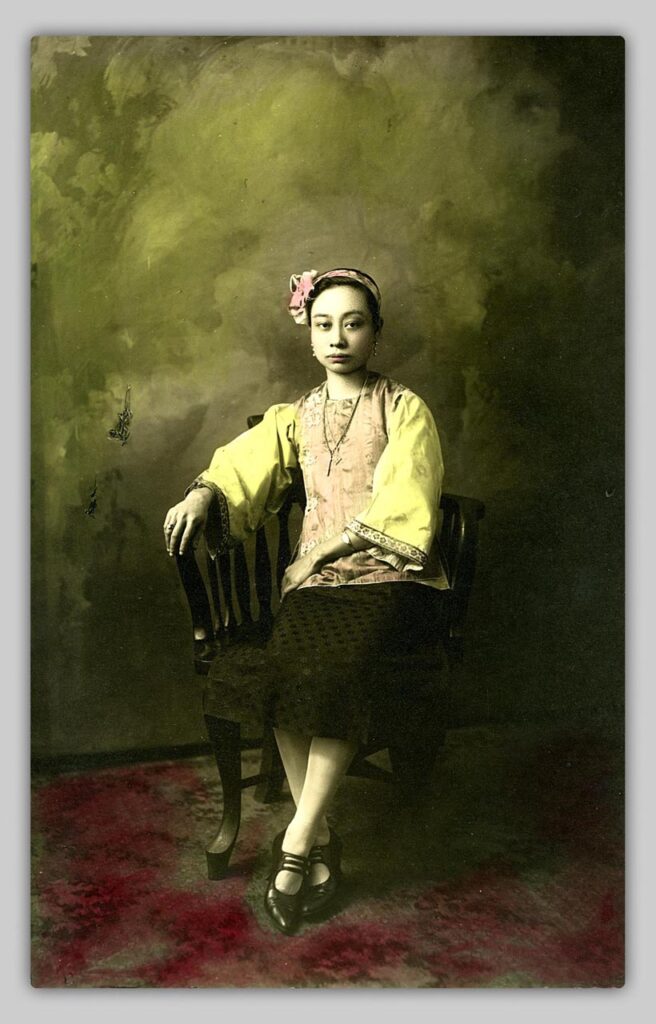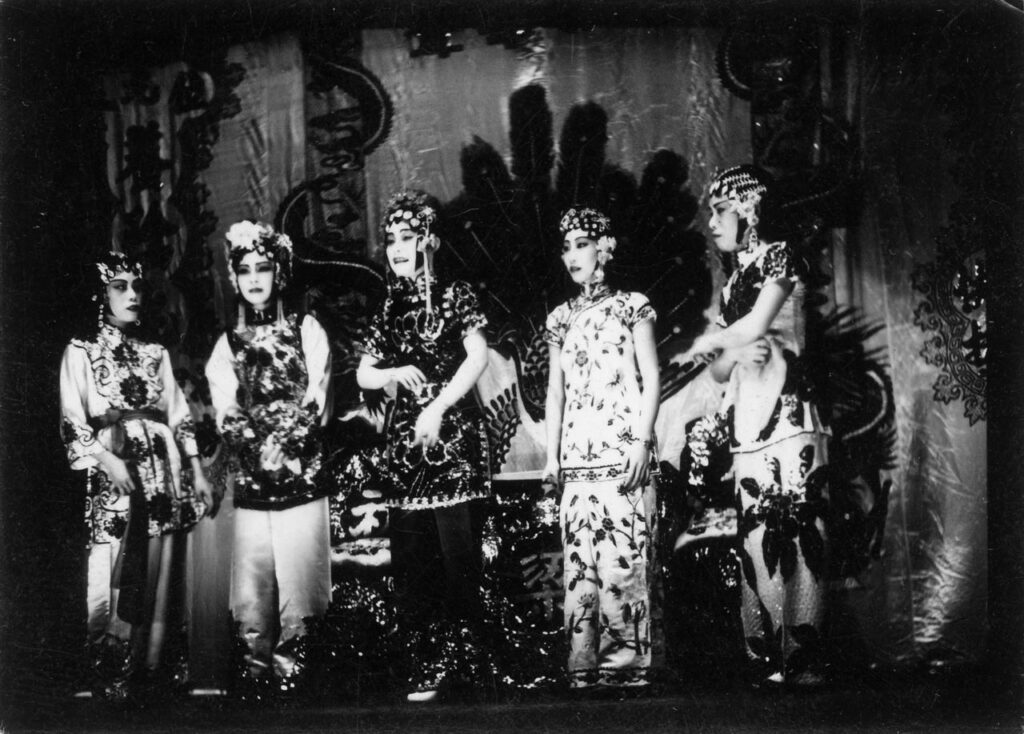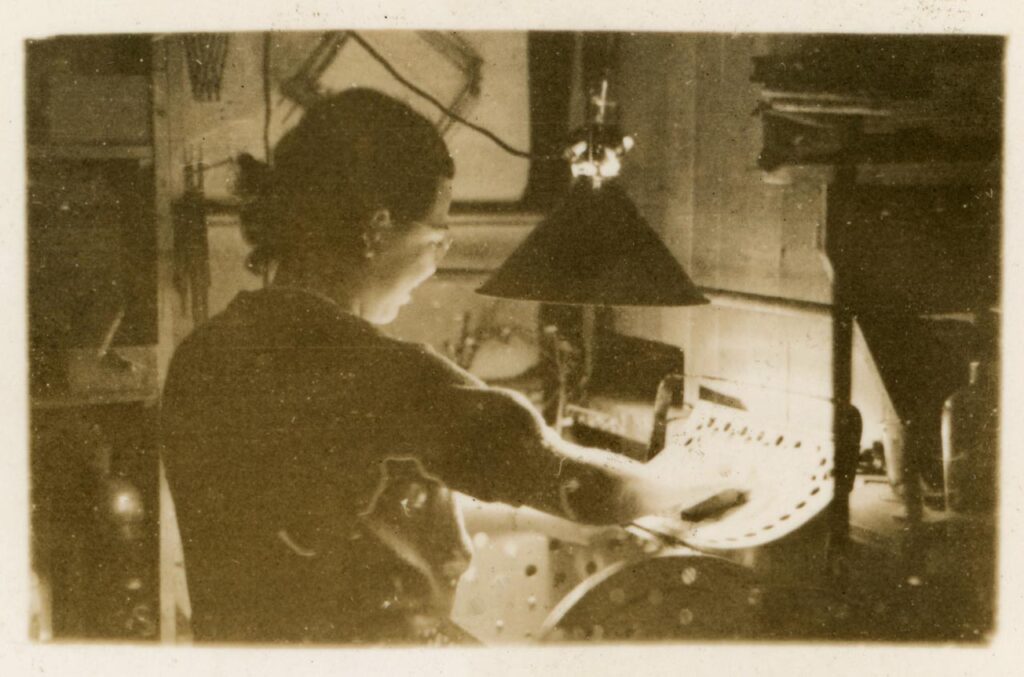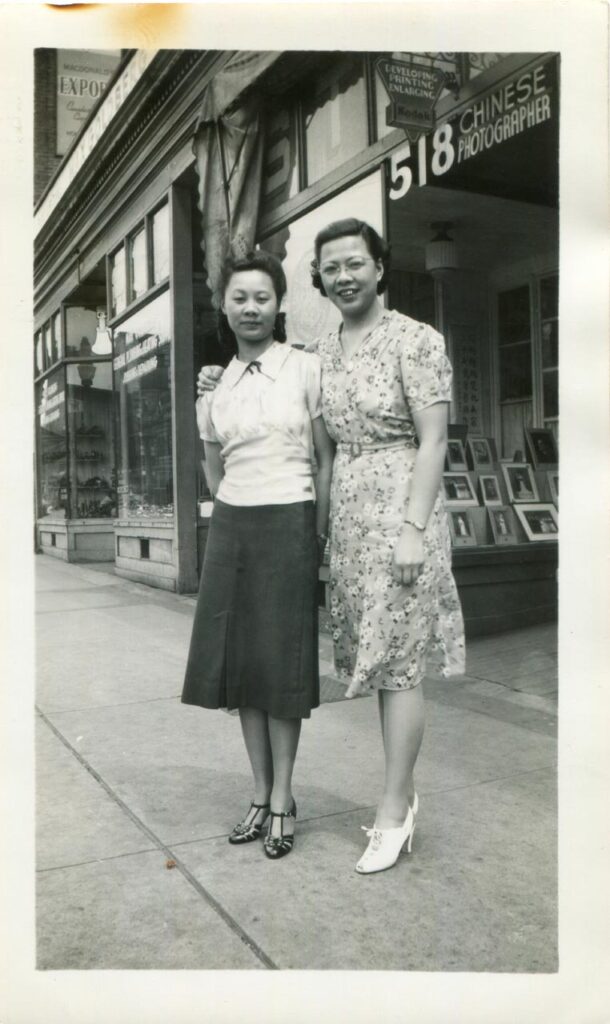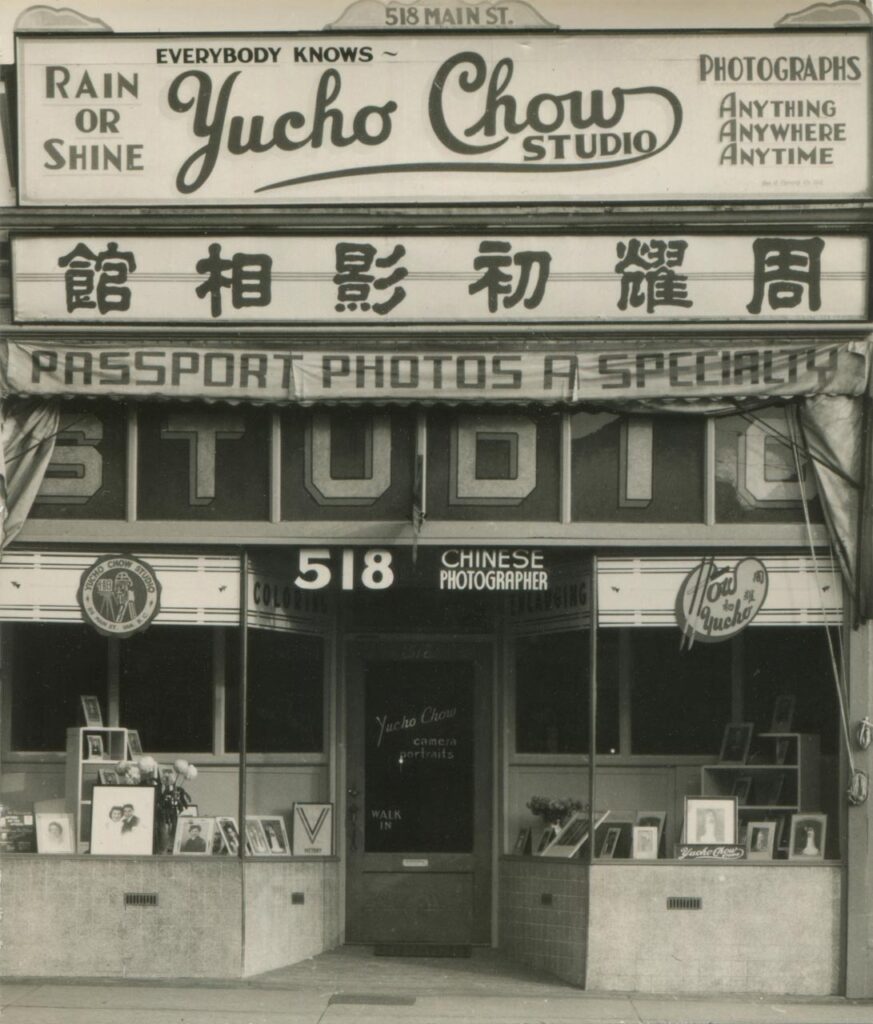Lesson #3: Defining Success - Whose Stories Matter?

1942 Peggy Chong, photograph by Yucho Chow, City of Vancouver Archives 2021-034.318
Guiding Questions
- How should we define success or determine who or what we value?
- Whose stories are told in historical narratives and whose are left out?
Curricular Competencies
historical significance; ethical judgment; change and continuity
Teacher-Led Lesson
Because this lesson asks students to consider “Who gets to tell the story and how?” and “What stories get to be told?”, it is important that the learning environment promotes intellectual curiosity, thoughtful engagement, and respectful appreciation of different perspectives and ideas about who or what is considered important in history. If you have not already explored Lesson #1 with your class, please consider taking the time to do so now.
Begin by asking students (individually or in pairs) to create a list of five individuals they perceive as successful. This can be people in their lives or out in the world, alive or not. Ask students to debrief their lists in groups. Do they agree with the people that others have come up with? Why or why not? Have groups consider what qualities they used to define an individual as successful or not.
Share the lists of individuals and qualities as a large group. What do the students notice about shared qualities between the people identified as successful? Encourage students to consider examples of commemoration or memorialization, such as statues and names of buildings, that remember or honour people deemed successful or valuable in the past. Discuss the similarities and differences between characteristics of success they generated from their lists and characteristics of the past people considered important enough to memorialize (for example, male, educated, upper middle class, discovered something, the first of something). Using local examples may help students generate more ideas.
Ask students to think about how they learned their definitions of success and value. Ask them how the definition of success might have changed over time to include folks from different backgrounds (who are not male, able-bodied, white, wealthy, educated).
Now, create your own defining criteria of success and value. Students may do this in small groups on chart paper to start or work as a class while projecting onto the screen or whiteboard. Ask students to include four to five criteria. They can include historical criteria, but ask them how inclusive or intersectional these criteria are. Invite students to really consider what the criteria or characteristics look like through embodied examples. It’s not enough just to say someone is a “leader”—define the qualities of leadership.
Sample
| Criteria/characteristics | What this looks like |
|---|---|
| Involved with the community | Participating in community organizing; volunteering |
| Pioneer | Contributing a new finding or new idea that helped others and improved lives |
Next, remind students of an earlier question: How did they learn these criteria of success and value? Introduce the concepts of norms or normalization and socialization. Explain that through normalization and socialization, we learn values from the people influential in our lives, including parents, family, teachers, and media personalities, both implicitly and explicitly, to the point that we may not even realize when this process occurs. Watch the 10-minute Crash Course Sociology video on socialization. Ask students to take notes and identify the four influencers of our socialization (family, school, media, institutions).
Debrief the video in a class discussion. Possibles discussion questions may include:
- What is a social prescription?
- Who is the biggest social influencer in your life?
- What was interesting or new to you that stood out in this video?
- Do you agree or disagree with the information presented? Was it an oversimplification of how we learn values? Why or why not?
- What are other possible institutions that may shape values and the way people behave? (e.g., workplaces, sports teams, religious groups)
- Aside from the four introduced in the video, is there another social influencer in your life?
Direct students to the Suzhou Alley Women’s Mural Website. If you haven’t already worked with the mural, project the SAWM website onto the whiteboard or screen so students can examine it. Or let students access the mural website on their devices to explore it. Ask:
- What is this website about?
- What is the mural about?
Explain to students that the group will further explore the women in the mural to find out why the SAWM project team selected and commemorated them, or, in other words, why they were deemed successful, valuable, or important enough to honour and remember. Only a handful of individual women appear in this mural, and the majority are nameless or faceless but represent those who have worked in and made significant contributions to different social sectors. Let students know that they can research other exemplars of Chinese Canadian women who may not be included in the mural. Organize students into small groups for a Jigsaw and explain the task:
Choose one of the women to research and learn about. What makes her successful or valuable? Use your criteria of success and value to explain why she is deemed successful. Present your findings and decisions on chart or poster paper, Padlet, social media (Instagram/ TikTok), PowerPoint, video, or other medium. Then explain why you think these women have been deemed important enough to be honoured and memorialized in the SAWM.
Criteria of Success
| Characteristics of success | What this characteristic looks like (describe attributes) | Evidence of how this chosen individual has demonstrated this characteristic | Explanation and rationale of why this individual should be honoured |
|---|---|---|---|
Ask students to answer these questions in their presentations:
- What might have been the individual’s influence, impact, or legacy?
- How might they be considered successful, valuable, or important?
- Invite student groups to share out to the class, and then conclude with a deep discussion guided by these questions:
- What are the newly defined characteristics of success that the class chose to focus on to establish these women’s contributions, legacies, and accomplishments?
- Whose voices and perspectives should be considered when learning about important local history?
- Why specifically were Chinese women excluded from commemoration and memorialization? (for example, patriarchy in China, lack of education and opportunities for women, immigration of Chinese men as labourers, Canadian laws that prevented Chinese men from bringing their families and settling in Canada)
- Why does the mural tell stories of Chinese women who are both named and not named? (e.g., not everyone achieves glory and fame, and that’s not the only measure of success)
- Does a person’s name have to be published and known for a person to be “successful”?
Culminating Activities
Four possible culminating activities include analyzing sources for evidence of inclusion and exclusion; highlighting a previously ignored aspect of success or value; showcasing lessons learned from women in our lives; and proposing a commemoration for an important woman (elaborated in detail). This last lesson is recommended for grades 9–12.
1) Analyzing Sources
Ask students (individually, in pairs, or in small groups) to analyze archival materials about the women featured in the SAWM to uncover evidence of inclusion and exclusion experienced by women and also reflected in historical narratives. Ask students to choose the three most compelling pieces of evidence that show inclusion and the three most compelling pieces of evidence of exclusion. Invite students to explain their choices and to explain any discrepancies they encountered or challenges in interpretation. This task can be adapted for grade 5 by focusing on either inclusion or exclusion rather than both.
* Worksheet: Lesson #3 Analyzing Sources
2) Exploring Exclusion
Ask students to select one theme represented in the mural and unpack why it was historically excluded. Then ask students to rewrite this part of history in the form of a poem, short narrative, or comic. This task is recommended for grades 9–12 and can be done individually or in pairs.
3) Honouring an Elder
Invite students (individually) to develop their intergenerational consciousness (connecting the past with the present or future) by designing a two-dimensional visual or text-based artwork—including, but not limited to, drawing, illustration, painting, poetry or prose, collage, photography, printmaking, or embroidery in response to the following question:
- What have you learned from a woman elder in your life that connects you to your cultural heritage and/or identity?
This task is recommended for grades 5 and 9–12.
4) Propose a Commemoration
This task may take more time and has been elaborated in more detail. First, explain the task to students. In pairs or individually, students will propose and design an appropriate commemoration for an important local woman in response to the question: Who deserves to be commemorated and what is the most appropriate way to do it? Students will draft a proposal for a new local commemoration, including some design features (for example, in a sketch).
* Worksheet: Lesson #3 Propose a Commemoration
Alternatively, students could produce a media release or a news article about the SAWM detailing why and how its stories are being told.
Share more information about how the SAWM came to be from the resource “The Making of the Suzhou Alley Women’s Mural: A Conversation with the Artists.” Explain that the project gathered together women from multiple generations, diverse backgrounds, and a variety of professions to share stories and offered an opportunity for local women artists to uncover, tell, and retell lesser-known histories, guided and informed by women in the Chinese Canadian community who continue the work of their shared ancestors.
Discuss how the SAWM commemoration project differs from other commemorations that students are familiar with—some may be problematic, others well-loved. Begin by analyzing the mural as a commemoration as a class. Comparing and contrasting with an image of a local commemoration that the students are familiar with may help with this brainstorm. For example, discuss the type of commemoration it is, the subject of the commemoration, the location of the commemoration, who came up with the idea for it and how they made it happen, and when it was established.
As a class, continue the discussion about commemorations in general. Ask:
- Why would someone or something be commemorated?
- Is there a fair way to determine who or what should be memorialized?
- Who decides that someone or something should be commemorated?
- How does a commemoration get developed and then shared? Is this process fair or equitable?
- How would you propose or design a commemoration for an important local woman?
- How would you proceed in a fair and equitable way?
- Why does that matter?
Invite students in small groups to discuss some preliminary ideas for how to determine who they would want to commemorate and how. Encourage them to consider the larger purpose of their design. For example, is it to honour an important person, to thank someone for their contributions, or to celebrate certain values of leadership, community advocacy, or success?
Ask students to carefully consider and research before choosing an important woman to design a commemoration for and then to put together a creative proposal. Remind students that their objective is to propose and design an appropriate commemoration for an important local woman in response to the question: Who deserves to be commemorated and what is the most appropriate way to do it?
Commemoration proposals might include:
- a statement of significance (why the person is important and deserves to be remembered),
- the objective of the commemoration,
- the type and design of the commemoration that reflects the person’s importance,
- the exact location proposed and rationale for choosing this place,
- any quotations, details, or symbols that should be included or featured in the commemoration, or
- a title for the commemoration.
Note: Students might want to compare or critique the federal nomination process.
Assessment
If you choose to assess any of these culminating activities, you may prefer to use Social Studies proficiency scales that you are familiar with or you may apply some of the following assessment criteria:
- Selected compelling yet competing evidence.
- Rewrite of the past includes balanced perspective, accuracy, and plausibility (based on evidence).
- Connects knowledge from the past with the present.
- Shows an appreciation of intergenerational knowledge.
- Proposes an appropriate way to remember someone.
- Identifies the intent of a commemoration.
- Explains why someone is important historically and deserves to be remembered.
